Africa Traditional Religious System as Basis
of Understanding Christian Spiritual Warfare
 I. Introduction
I. IntroductionThe primary objective of this paper is to define the African traditional religious system as the basis of understanding Christian spiritual warfare within an African context. This background is essential to any application of Christian spirituality in Africa. For this reason, the paper serves only as an introduction to the application of Christian spirituality in Africa. There are basic African religious foundations that need to be presented and defined. These are essential for any Christian spiritual inquiry and application in Africa.
II. African Traditional Religious System
African traditional religious system has the following components:
A. Foundational Religious Beliefs
There are four foundational religious beliefs in the traditional religions: (1) the belief in impersonal (mystical) power(s); (2) the belief in spirit beings; (3) the belief in divinities/gods and (4) the belief in the Supreme Being. These foundational religious beliefs are essential to our theological interpretation and analysis of the traditional religions. Any meaningful and effective Christian approach to the traditional religions must begin from here.
1. Belief in Impersonal (Mystical) Power(s)
What is the influence and impact of this dominant religious belief in impersonal and mystical powers upon the whole of traditional African life? The Bible and Christian theology have to address this foundational and dominant influence and impact upon the traditional African life.
The belief in the impersonal (mystical) power is dominant and pervasive in traditional African religious thought. The whole of creation, nature and all things and objects are consumed with this impersonal power. This impersonal power is what Edwin Smith called mysterium tremendum. This same power has been given various names, such as, mana, life force, vital force, life essence and dynamism.
In African beliefs, the source of this impersonal or (mystical) mysterious power is not always known, but it is usually attributed to the activities of higher “mysterious” powers, whether personal or impersonal that either generates or deposits such powers in things or objects. The potency, efficacy and the durability of such “inhabited” impersonal powers varies from object to object. Some objects are said to be inherently more power induced or “imputed” than others, that is, they are more naturally endowed with powers than others are.
The manifestation and the use of the impersonal powers are related to the practices of medicine men and women, diviners and seers who use natural objects, plants and animals for medicine, magic, charms and amulets. Some specialists belief that mysterious powers imbedded in things or objects can be extracted for specific uses. Mystical and mysterious powers can be transmitted through certain object media or by pure spiritual means. Mystical powers can be sent to specific destinations for an intended good or evil. Mystical powers can be contagious by contact with objects carrying or mediating such powers.
The impersonal powers can be used for both good and evil. The life of a traditional African with this belief in the impersonal powers is at the mercy of the benevolent or wicked users of the mystical powers at their disposal. This belief is very much reflected in the traditional religious practices and behaviour.
As stated earlier, the belief in the impersonal (mystical) powers is dominant and pervasive among traditional Africans. This belief has a theological basis. Christianity must recognise and study the theological basis of the traditional African belief in the existence of mystical and mysterious forces. The religious and social role and function of this belief must be thoroughly studied and understood. The application of the Bible and the Christian Gospel to this very religious belief must address it at its foundations and roots:
1) What do traditional Africans feel about the pervasive and dominant presence of the mystical and mysterious powers and forces? The Bible and the Gospel of Christ must address this traditional religious core value and its dominant influence upon man in traditional Africa. A Biblical and Christian theology has to be formulated and developed so as to address the traditional theology of mystical and impersonal powers.
2) What is the nature of this traditional belief in the mystical, mysterious powers and forces and its total influence and impact upon the total man in traditional Africa? How do we apply the Bible and the Gospel of Christ to the nature of this belief and to the nature of its impact or influence upon man in traditional Africa?
3) What are the religious practices and behaviour that do accompany, support and reinforce (a) this belief and (b) feelings generated by this belief? How do we study and apply the Bible and the Gospel of Christ to all the various practices, attitudes, rituals, rites and ceremonies that traditional Africa has fundamentally developed from this belief?
Our theological approach must go beyond matching Biblical texts with specific traditional beliefs to addressing the theological, philosophical, moral and ethical bases and foundations of these beliefs. We must lay the axe at the root. Religious beliefs, feelings, practice and behaviour have roots and bases. The traditional conception of mystical and mysterious powers has deep theological roots.
When Christian categories are introduced, such as: the power of the blood of Christ; the power of Christ; the power of the Holy Spirit; the power of God; the power of prayer in the name of Jesus, how are these powers understood theologically by man in traditional Africa? The traditional theology of power and forces is what should be addressed by the Bible. When a belief in the potency of mystical and mysterious powers and forces are condemned as demonic, man in traditional Africa needs to know why such things are demonic. They seem to work and he sees and experiences their power, potency and efficacy. A mere reference to a Bible verse may not be enough to dissuade and convince him to do and believe otherwise.
His religious beliefs and practices are structured within the framework of his traditional religious worldview. They must be addressed at the root, at their theological basis and worldview. What is that theological foundation of the belief in the mystical and mysterious powers and forces and its accompanied feelings, practices and behaviour? This is what a Christian theologian must find out. The African needs more than just a Bible verse, he needs a Christian worldview which contains such. He needs to know why he should believe differently. The “why” is contained within the Biblical and Christian foundations.
2. Belief in Spirit Beings
What is the influence and impact of this dominant religious belief in spirit beings upon the whole of traditional African life? The Bible and Christian theology have to address this dominant influence and impact upon the traditional African life.
Traditional African concepts of reality and destiny are deeply rooted in the spirit world. The activities and the actions of the spirit beings govern all social and spiritual phenomena. The spirit world can be divided into two broad categories: (1) non-human spirits and (2) the spirits of the dead. Non-human spirits are regarded in hierarchical order in accordance with their kind and importance, depending upon their power and the role they play in the ontological order in the spirit world (Oji, 1988:17).
First in the hierarchy is the Creator, then the deities, object-embodied spirits, ancestors’ spirits and other miscellaneous spirits that are non-human, comprising both good or harmless spirits and evil spirits. Man stands between this array of spiritual hosts in the spirit world and the world of nature (Ikenga-Metuh, 1987:125-144).
What Constitutes the Spirit World?
What constitutes the spirit world is summarised below in the words of Kato (1975:36-41):
1) The whole world is full of spirits;
2) the abode of spirits are numerous, such as the silk cotton tree, baobab tree, sycamore tree, burial grounds and other places;
3) the spirits are classified into two categories, the bad ones and the good ones;
4) a firm belief in reincarnation;
5) a belief in and practice of exorcism or spirit possession;
6) a belief in life after death, future reward and future punishment;
7) evil spirits are always associated with Satan (Kato, 1975:36-41);
8) spirit possession.
In defining the religious worldview of Africa, Mbiti stresses the fact that the spirit world of the African people is very densely populated with spirit beings, spirits and the living-dead or the spirits of the ancestors (Mbiti, 1969:75). The spirit world is the most pervasive worldview. Contained within it are the spirits, the ancestors and the Supreme Being or God (Ikenga-Metuh, 1987:103-179).
There is a very close relationship between the spirit beings and the mystical or impersonal powers and forces described in the previous section. This realm of the supernatural operates mystical power, magic, witchcraft, sorcery and many others. The spirit world or the realm of the supernatural is, in a sense, a battleground of spirits and powers that use their mystical powers to influence the course of human life. These mystical powers can be designated as positive or negative, good or evil, which may bring blessings or curses.
If man only knew how to master and control the realm of the supernatural, the world would be a much happier place. Belief in the mystical powers as described already, the spirit beings behind them and the human quest to control or influence them had produced a variety of specialists such as medicinemen, rainmakers, mediums, diviners, sorcerers, magicians and witches. Superstitions, totems, taboos and rituals grew out of such beliefs.
For safety and protection in a world dominated by the spirit beings and powers, one needs a spiritual compass for guidance and practical efforts for control, protection and security through religious rites, reverence to ancestors, symbolic totems and regulative taboos, rituals, superstitions, customs and specialists. For guidance and protection in life, one needs some, if not all, of these.
As we have already observed, in the African traditional religious thought, spirits are believed to dwell or inhabit certain trees, rocks or mountains, caves, rivers, lakes, forests, animals, human beings, the skies, the ground and other cites, carved or moulded objects, charms, amulets.
The spirit beings are usually divided into two categories: (1) the spirits of the dead elders (the ancestors) and (2) the non-human spirit beings. The ancestors are close to the humans and serve as their custodians. All spirit beings are endowed with certain powers and they apply these powers upon the humans for their good or for their harm. Because the spirit beings are malicious, capricious and sometimes benevolent, man must be wise in his dealings with the spirit beings. They can easily be angered, provoked or injured by the humans and so man requires tack and wisdom in dealing with them. In dealing with both the impersonal (mystical) powers and the spirit beings, man needs human specialists who have gained experience and access to these two types of mysteries to help them live a successful life and acquire good human well-being. These spirit beings can be “manipulated” to serve the humans or vice versa.
This belief, just as in the case of the previous one, has a theological basis. Christianity must recognise and study this very theological basis of the traditional African belief in the existence of spirit beings. The religious and social role and function of this belief in the spirits must be thoroughly studied and understood.
3. Belief in Many Divinities
What is the influence and impact of the dominant religious belief in the divinities upon the whole of traditional African life? The Bible and Christian theology have to address this dominant influence and impact upon the traditional African life.
African traditional religions in some parts of Africa, have had an elaborate pantheon of divinities. But there are exceptions to this general observation, especially in Southern Africa and some parts of West Africa. Some African ethnic groups do not seem to have divinities, while some were known to have no special shrines or worship places designated to the divinities or to the Supreme Being. However, the Yoruba of Nigeria are known for having several hundreds of divinities.
African scholars for the past three decades, have changed certain perspectives and even the definition of African divinities (Idowu, 1962; Mbiti, 1975). Some African scholars no longer accept the term polytheism (worship of many gods). They prefer the term “divinities” or “deities” to “gods”. The debate on whether African “divinities” were worshipped as “gods” or whether they were only “intermediaries” or “mediators” is inconclusive. Some have argued that “Africans do not worship their divinities nor their ancestors, but God”. In this argument, a view is being held that sacrifices, offerings and prayers offered, are not directed to the divinities or the ancestors, as ends in themselves, but are directed ultimately to God. We have no intention of discussing this debate here, but simply to mention it in passing.
African divinities are many and each has its specific area of influence and control. Some of these divinities were originally mythological figures in some African legends and primordial histories and cosmologies, while some were tribal heroes or heroines. Divinities covering different aspects of life, society and community were usually established, such as divinities of the sea or the waters, rain, thunder, fertility, health or sickness, planting or harvest, tribal, clan or family deities. African divinities took the forms of mountains, rivers, forests, the mother earth, the sun, the moon, the stars, and ancestors. The plurality of the divinities with their varying powers, influence, hierarchy, territoriality, even within one ethnic group or community, says a lot about the African religions, worship, beliefs and practices. This leaves an open door for religious accommodation, tolerance, assimilation and adaptation within the traditional religious thought. The traditional African understanding and the interpretation of Christianity have deep roots in these fundamental beliefs of the African traditional religions. This belief, just as in the case of the previous one, has a theological basis – the plurality of divinities (polytheism).
With the introduction of Christianity or other religions, such as Islam, this belief with its worldview may have an added feature and it is henotheism, the worship of one god without denying the existence of other gods. There is a possibility that the Christian God who has been introduced, can be worshipped along with other gods. The theological basis of this traditional belief allows it to take place without creating any serious theological crisis in the traditional religion. Plurality of gods or divinities permits plurality of beliefs, practices, feelings and behaviour in one religion. This belief also gives room for accommodation, adaptation and domestication of new gods or divinities into the old religion. Other gods or divinities and divergent views and practices can be tolerated without confusion. All these are possible because of the theological foundation of this belief in many gods and also in the hierarchy of gods or divinities.
4. Belief in a Supreme Being (God)
What is the influence and impact of this dominant religious belief in one Supreme Being upon the whole of traditional African life?
The works of African scholars for the past three decades have established the fact that Africans have a concept of an universal God and the Creator (Idowu, 1962; Mbiti, 1975). Most Africans are in agreement that the traditional Africans do not actively worship this Supreme Being.
Idowu calls the Yoruba religion “diffused” monotheism. This means that the Yoruba had originally a “monotheistic” religion, but as the religion gradually decayed over the centuries, the rising proliferation of the divinities were overshadowing the earlier monotheistic beliefs and practices of the religion. Even with this definition of “diffused” monotheism in the Yoruba religion, coupled with similar notions scattered across the continent of Africa, the overwhelming facts do show that, even though Africans generally have an awareness and belief in the Supreme Being, the truth is, this Supreme Being is not known to have been exclusively worshipped by traditional Africans. Instead, the African divinities and the ancestors, who are the lesser beings, have been actively involved in the everyday religious life of the traditional Africans. They directly receive sacrifices, offerings and prayers offered by the traditional Africans. In most traditional African societies, the Supreme Being was not actively involved in the everyday religious practices of the people, but the divinities, the gods and the ancestors were. In some parts of Africa, the Supreme Being is usually mentioned in prayers, songs and in some religious ceremonies.
The definition of the divinities or ancestors as “intermediaries” is very weak in the face of the Biblical definition of religions, divinities and gods in general. Traditional Africans believe in a Supreme Being, who is “above the lesser” divinities and the hierarchy of beings. This belief has its profound theological influence upon the traditional Africans. The God who is above the lesser gods, seems “not to be intimately involved or concerned with man’s world. Instead, men seek out the lesser powers to meet their desires” (Steyne, 1990:35). This leads man to turn to the impersonal powers, the divinities, the gods, the ancestors and the spirit beings for help. God is only occasionally mentioned or remembered.
How do we define the nature and the structure of the African traditional religious thought? The belief in the impersonal powers is expansive and pervasive. It is also equally true of the belief in the spirit beings. The third component, which is the belief in the divinities or gods, is not as pervasive and expansive as the first two components. Not every ethnic group in traditional Africa has divinities or gods. The fourth component, which is the belief in the Supreme Being, is widely held all over Africa, but this belief does not generate any religious fervour or any intimate relationship with the Supreme Being as with the first three entities. The Supreme Being seems to be far remote or less functional in the traditional African everyday life. The religious activities of the traditional Africans revolve mainly around the first three entities. But these four fundamental religious beliefs do not tell us much about the organisation of the traditional religious system. How is the traditional religious system organised around these four components?
The basic theological system, which was developed from these four fundamental beliefs, is summarised by Steyne: ” … the world is essentially spiritual and the material and the spiritual are totally integrated. Man needs power from outside himself to control his environment. Life’s purpose is to seek and maintain the balance and harmony that result in success, happiness and security. To do this man must deal with the spirit powers correctly. Thus by rites, rituals and liturgies, he must impress and manipulate spirit beings to produce success, happiness and security” (Steyne, 1990:39).
5. Hierarchy of Spiritual Beings
The traditional religious worldview conceives of all spiritual beings in their hierarchical order. The Supreme Being is the highest and the greatest. The lesser beings, such as gods and divinities occupy a lesser position, but higher than the humans do. The authority, power, influence and legitimacy of spirit beings depend upon their position within the ontological order of beings. Spirit beings, by virtue of their positions and roles within the ontological order, (1) dispense and control the activities of spiritual and mystical powers and forces and (2) influence morality and ethics of the human societies.
Traditional Africans respond to these spirit beings according to their place of hierarchy, power, influence and role. Religious values, activities, practices, morality and ethics are accorded to each spirit being in proportion of his position of authority, power, influence, territoriality and legitimacy. Thus, in traditional religious worldview, spirit beings are graded. This has great consequences on the traditional conception of morality and ethics (Ikenga-Metuh, 1989:243-259).
This theological concept in traditional religions has a great influence upon how traditional Africans define the role and function of the Supreme Being, lesser beings, divinities and ancestors in an African community.
We now turn from examining the foundations of religious beliefs to the foundations of religious practices.
B. Foundational Religious Practices
Religious beliefs do beget corresponding religious practices and religious behaviour. The five inter-related and integrated religious beliefs examined in the previous sections have established the theological basis of the traditional religious system. These beliefs have in consequence influenced the development of the corresponding religious practices, which we are going to describe very briefly. The traditional religious system is informed and motivated by these religious beliefs and their corresponding practices, behaviour and feelings.
The foundational religious practices in the traditional religions are: (1) the practices of establishing links, relationship and close ties with the cosmic mysterious, mystical and spirit powers and forces; (2) the practices involving various religious and social rites, rituals (sacrifices and offerings) and ceremonies; (3) the practices of establishing various spiritual and mystical communications with the spirit world and spirit beings and (4) the religious and social practices of relating to the various activities of the traditional African specialists.
Discussions in this section will be very brief. Ideas in this section are culled from Steyne (1992) and Gehman (1989). Various religious practices are described covering a wide range of religious and social interests. Our primary goal for doing this is to enable us to identify and define the theological foundations of the traditional religious practices and behaviour. This establishes the theological foundations for defining and interpreting traditional religious practices and religious behaviour.
In this section and in other places, we are not going to differentiate between what is strictly religious from what is strictly social or what are prohibitions and abominations or taboos from what are acceptable social and religious norms, practices and behaviour. Both the good and evil are found in the traditional religious worldview.
1. Establishing Links and Relationships with Cosmic, Spiritual and Mystical Powers
In his quest to establish links and relationships with cosmic, spiritual and mystical powers and forces, man in traditional Africa has developed a variety of religious and social practices, rituals and ceremonies as means of achieving this quest. There are two types of religious and social practices that are used in traditional Africa in order to establish links and relationships with the cosmic, spiritual and mystical powers and forces: (1) through the means “of exercising control” over the world of the mystical and spiritual powers and (2) through the means of restoring cosmic and spiritual harmony/balance.
Why is it necessary for man in traditional Africa to seek to establish links and relationship with the mystical and spiritual powers and forces? In the first place, what do these spirit and mystical powers have to offer man in traditional Africa? What are those spiritual and mystical powers that man is searching for? What does he use these powers for? Secondly, what are the means of establishing these links and relationships? How are these means acquired? From whom and where can these means be acquired? Do they have rules and regulations? What happens if such are broken?
These probing questions are necessary in elucidating the deep and hidden theological foundations of religious and social practices involving cosmic spiritual and mystical powers and forces. The two means of linking and communicating with the spiritual powers and forces in traditional Africa are presented below.
a. Means of Exercising Cosmic, Mystical and Spiritual Control
In his quest to exercise cosmic mystical and spiritual control over his world, man in traditional Africa has developed a variety of religious and social practices, rituals and ceremonies. The means of acquiring or having access to these powers and forces are many. Each is governed by its own set of rules and regulations. The means becomes very important because it sets its own rules and regulations, which must be followed faithfully. The means determines the religious behaviour and what rites, rituals and ceremonies must be performed so that the desired end can be achieved. The means controls behaviour, practice and even to some extent, feelings and expressions. The powers that grant and distribute the needed commodities become all-powerful while those that receive them become slaves or devotees.
What if those who have the privilege to distribute the needed powers and forces are in themselves “wicked” and “evil”? That describes the danger which man in traditional Africa faces in his quest and pursuits of spiritual and mystical powers. What would he not do in order to gain access to mystical and spirit powers? And what would he not do in order to control, retain and keep on using such mystical powers and forces?
Cosmic, mystical and spiritual control can be exercised through the practices of: (1) incantations and power of words; (2) the power of symbolism; (3) the power of magic; (4) the power of charms; (5) the power of fetishes or “juju” and (6) the power of witchcraft and sorcery (Steyne, 1990).
The condemnation of many of these practices abound in both traditional religions (some prohibitions and abominations) and the Holy Bible. Even though the Bible condemns them, the potency and powers usually manifested in this area are powerful. The Bible does not deny their existence, but rather condemns their practice, use and believe in them.
The theological issue here does not lie in the prohibitive act of its condemnation, but rests in two things: (1) the belief in the usefulness of such powers and also the belief in the means and practices of obtaining power and (2) the act of self-giving or the giving of oneself to the authorities or entities that lie behind these powers. A Biblical theology should address: (1) These powers and, if obtained, what will they be used for? (2) Which practices, behaviour and feelings are involved as means of obtaining the desired powers? (3) The act of self-giving or selling out of oneself, the act of bowing down to worship the giver who is other than or a rival to God.
These powers are indeed usurping the central place of God in the life of man. The Bible clearly and emphatically states that these beings are enemies of God and their primary involvement with humans is to keep them away from their Creator and God.
Whether these practices are sanctioned or prohibited in the traditional religions, they, however, fall short of Biblical standards. These powers are obtained, not from God, but from his usurpers, the Devil and his demons. Even those obtained from the divinities, fall short of the Biblical standards too. Divinities cannot be acceptable substitutes of God Himself. In the Bible and Christian theology, only God can exercise power and control over his entire universe. A Christian theology of God’s providence and Christ’s mediatorial work on the cross become relevant here.
b. Means of Restoring Cosmic and Spiritual Harmony
Man’s delicate dealings with the cosmic and spirit powers and forces have certain rules and regulations. And these become manifest in certain religious practices. Man is aware that many things do go wrong and not all his expectations and needs are always met. And when things go wrong and expectations and needs are not met, there must be something wrong. Things can be corrected through reconciliation, restoration and the making of peace. Cosmic and spiritual harmony can be restored through the practices of (1) sacrifices and offerings/gifts and (2) taboos (Steyne, 1990).
The spirit beings who dispense powers to man are still in charge of the spirit world even when things go wrong. It is the humans who are required to do something so that harmony, peace and fellowship can be restored. What types of offences, or wrongs, violations and sins do humans commit against the spirit world or the spiritual order? If wrongs are admitted, what fears, feelings or guilt do they generate? Who gets hurt when the humans sin or go wrong? Why is maintaining cosmic harmony and order necessary for man? What specific religious practices, sacrifices and offerings are efficacious in acts of reconciliation and peace making between the humans and the spirit world?
Christianity has to address these theological issues and provide Biblical solutions to them. In the Bible and Christian theology, only God is the rightful means of restoring cosmic and spiritual harmony over his entire universe. A Christian theology of reconciliation becomes relevant here.
2. Practices Relating to Rituals and Ceremonies
Ritual practices are many, depending upon their functions. There are rituals that are communal with fixed annual seasons, hence ceremonial in nature. There are others that are private or do not have any fixed annual calendar, but are practised as needs arise. Rituals and ceremonies play very dominant religious and social functions in African societies.
Traditional rites, rituals and ceremonies all have their foundational beliefs and theological basis. The purpose for such practices must be ascertained. The totality of what is involved in practice must also be ascertained. Rituals and ceremonies do have their accompanied practices, rules and regulations. These practices, rules and regulations become the means of linking traditional Africans with the spiritual powers and forces. A Christian theology should examine what religious practices, rules and regulations and what spiritual powers and forces are solicited.
Theological models of approaching and addressing the traditional religious practices, rituals, festivals and ceremonies have been well developed in the Old Testament (Pentateuch) and the New Testament (apostolic teachings).
3. Practices Relating to Spiritual and Mystical Communication
There are various practices of spiritual and mystical communication with the spirit world, such as (1) dreams, (2) visions, (3) vision quests and (4) divination and ordeals (Steyne, 1990). The desire to communicate with the mystical and spirit powers has its basis in the traditional religious beliefs and religious practices.
Why is communication with the spirit world so important? With whom is this communication done, and why? What are the means of communicating with the spirit world? What is the content of this communication and what is it expected to achieve?
The Bible has so much to say in this area: (1) the means of communication must be examined in terms of its theology; (2) the content of communication must also be examined in terms of its theological import; (3) who is being communicated to? Both the act and the means of communication and their means of reception must be examined theologically. Is all communication in the traditional beliefs and practices directed to God or to the lesser beings? Why has man chosen to communicate with the lesser beings rather than God?
Theological models of approaching and addressing the practices relating to spiritual and mystical communication have been well developed in the Old Testament (Pentateuch) and the New Testament (apostolic teachings).
4. Practices Relating to Traditional African Specialists
Traditional Africa has a host of specialists who are professionals in their various disciplines, such as (1) priests, (2) medicine men and women, (3) diviners, mediums, sorcerers, witches, wizards and midwives. Each profession has a set of beliefs, rules and regulations, practices and rituals. Each profession must be examined in terms of its theological foundations, practices, moral and ethical foundations. Some of these professionals and specialists use mystical and spirit powers, some ordinary human ingenuity and wisdom, while some are cheats or deceivers. How these powers are acquired and used must be examined theologically.
The theological models of approaching and addressing the practices relating to the traditional African specialists have been well developed in the Old Testament (Pentateuch) and the New Testament (apostolic teachings).
C. Philosophical Foundations in Traditional Worldview
We have identified four basic philosophical foundations in a traditional religious worldview. These four categories were outlined by Steyne in his study of animism (1990). We have adopted and developed them into a comprehensive and coherent philosophical system and worldview, which has enhanced substantially our definition and interpretation of the African traditional religions and cultures. These categories are classified as:
· Holism/organism which is governed by the Law of Harmony;
· spiritualism which is governed by the Law of the Spirit;
· dynamism/power-consciousness which is governed by the Law of Power;
· communalism which is governed by the Law of Kinship.
The four foundational religious beliefs discussed in the previous sections with the above four categories in the philosophical foundations, do have a combined effect in producing “a powerful and pervasive” religious and cultural worldview which dominates and influences the traditional African thought. The philosophical foundations complement the theological foundations of the previous section. From the philosophical foundations we can also develop the traditional “moral laws” within the traditional worldview.
1. Holism/Organism: the Law of Harmony
This is a holistic or an organic view of the world, which is governed by the law of harmony. The law of harmony simply means “a state of agreement or peacefulness”. The traditional African seeks to live in harmony and to balance his life in a harmonious and peaceful existence with his entire world and especially with the spirit world.
The terms organic or holistic are similar. An organic view sees the whole world as “a complex structure of inter-dependent and subordinate elements whose relations and properties are largely determined by their function in the whole”. A holistic view sees “the organic or functional relation between parts and wholes” that constitute the whole world (Webster’s New Collegiate Dictionary, 1977). Steyne uses the term holism as “a philosophical term for the view that life is more than the sum of its parts”. He defines the concept in the following way:
“The world interacts with itself. The sky, the spirits, the earth, the physical world, the living and the deceased all act, interact and react in consort. One works on the other and one part can’t exist nor be explained without the other. The universe, the spirit world and man are all part of the same fabric. Each needs the other to activate it” (Steyne, 1990:58).
How does man see himself and relate to his world with this organic or holistic view of life? From this conception, man stands face to face with the “physical”, the “material” and the “spiritual” dimensions of his world. He interacts with them and they in turn interact with him. Steyne observes that man (1) “feels at one with his world and his world mystically reciprocates” and (2) he does not differentiate or draws “distinctions between the physical, material or the spiritual”; “between the sacred and the profane”; between “the secular and the religious”; between “his profession and his community responsibilities”; “they are all knit together in a whole” (Steyne, 1990:59).
We can understand how Western dualism creates serious theological problems for the traditional Africans who have an organic or holistic view of life. Christian theology should use this traditional African worldview to develop a relevant and effective theology for Africans. The pantheistic elements imbedded in this African holism would have to be addressed and evaluated Biblically.
The concept of nature is related to that of the impersonal or the mysterious powers as well asto the spirit beings. Nature is defined as “this visible material world or universe, comprising both living and non-living things, visible and invisible powers, plants and animals, the inanimate and the natural phenomena, like lightning and thunder, all centred around man. The spirit world is all the same tacitly understood as inclusive in nature” (Oji, 1988:15). Nature is created by the Creator. Nature, man and the spirit world constitute one fluid coherent unit, hence, the conception of the traditional African worldview as a unity. It is not a confused world of non-integrated parts. Life, in general, is holistic and remains mysterious.
Christianity has to address the African holistic/organic view of the world, which is governed by the law of harmony. Here, Christianity faces, not a specific religious belief, but a philosophical worldview that is expansive and covers the totality of life, both in the human world and in the spirit world. Christianity faces the all embracing worldview that puts everything into one basket: (1) the mystical and mysterious powers and forces; (2) the spirits, gods, divinities and (3) the Supreme Being. And all of these categories of the spirit beings demand man’s attention. Man, on account of this has developed all kinds of religious practices, rituals and ceremonies as means of serving and meeting man’s needs. Furthermore, he employs all kinds of means to communicate with each one of these spirit beings, where and if possible. He employs the services of many specialists and religious practices that can effectively link him up with the spirit world.
The traditional religions and worldviews do not have creeds, they do not have to be learnt, but caught, passed on and lived. This is a pervasive religious worldview with a dominant and powerful influence on man in traditional Africa. Christianity has to address this traditional religious holism/organism and its pantheistic tendencies. These aspects are felt very strongly in the traditional conception of the mystical, mysterious and spirit powers and forces, which must be lived with in harmony/balance.
The philosophical law of harmony deals with the theological questions of reconciliation, restoration, reverence, awe, sense of wonder, the accompanied sacrifices and offerings, ceremonies, rituals and worship. Moral and ethical questions are also raised in the area of a relationship between the humans and spirit beings. How do humans and spirit beings relate to each other and under what moral laws?
With whom and what should man seek to live in harmony, in peace, in fellowship and communion? The theology of redemption and reconciliation in the work of Christ on the cross becomes more meaningful as it addresses the questions of cosmic harmony.
2. Spiritualism: The Law of the Spirit
This is a spiritual view of the world governed by the law of the spirit. This law reflects the preponderance and the dominance of the spiritual reality in the traditional African beliefs and worldviews. The whole of creation is replete with the dominant and pervasive presence of the impersonal powers and forces, spirit beings, many divinities and gods. Thus, “this world in essence is spiritual rather than material” and “life is saturated with supernatural possibilities”. Steyne describes this view further by saying: “Everything in life can be influenced by and responds to the world of spirits. Whatever happens in the physical realm has a spiritual co-ordinate and, likewise, whatever transpires in the spiritual realm has direct bearing on the physical world. Man is related to and dependent upon the unseen. For this reason all of life is to be understood spiritually. The correct response to any situation is spiritual, whether the matter is a family affair, sickness, or ceremonial practice” (Steyne, 1990:59).
This religious worldview is called spiritualism and it is pervasive and dominates the entire life of man. The reason for this spiritual pervasiveness and dominance is stated thus: “The whole universe is interconnected through the will and the power contained in both animate and inanimate objects. Everything man is, does, handles, projects and interacts with is interpenetrated with the spiritual. His socio-cultural structures, down to their finest details, are under the control of the spiritual powers or forces. Nothing in man’s environment escapes the influence or the manipulation of the spirit world. The world is more spiritual than it is physical and it is spiritually upheld. If life is affected by spirits, then it is of utmost importance to maintain good relations with the spirits and secure their favor” (Steyne, 1990:37).
Steyne used various concepts and terms to describe the traditional religious worldview. In traditional religious worldview, the “question of meaning” in life is dominated by the spiritual emphasis. “Life’s questions and answers revolve around the spiritual rather than the physical”. It is on account of this spiritual view of life, that “when personal resources fail, religious specialists will divine and supply satisfactory meanings”. Traditional Africans both recognise and understand this quest for meaning in the everyday happenings of life and would want to find out what lies behind every incident in life, such as “catastrophes, natural disasters, disease, untimely death and the other exigencies of life”. One must look “beyond the obvious” in order to find the spiritual “reasons” or causes in life. Because “the unseen is present in all phenomena”.
Given this spiritual view of the world, Christianity has to address the intrinsic meaning of African spiritualism and the dominance of the law of the spirit in the traditional African life. The penetrating power of the law of the spirit gives the traditional worldview a pantheistic conception of the source and the effect of the mystical and spirit powers and forces, while the presence of a myriad spirits and divinities, result in a polytheistic conception. Certain moral laws govern the inter-relationship and integration of spirit beings and humans in traditional spirit world. Religious practices, ceremonies and rituals function within these moral.
3. Dynamism/Power-Consciousness: the Law of Power
This is a dynamic/power-conscious view of the world governed by the law of power. The dominance of the impersonal, the unseen and the unpredictable spirit powers and forces in the world, make man to search and look for power which can help secure him in this dangerous world, where fate, evil, contingency, mortality and death abound. Steyne describe this power-consciousness in the following words:
“Life’s essential quest is to secure power and use it. Not to have power or access to it produces great anxiety in the face of spirit caprice and the rigors of life. A life without power is not worth living … Power offers man control of his uncertain world. The search for and acquisition of power supersedes any commitment to ethics or morality. Whatever is empowering is right” (Steyne, 1990:60).
What is this power? Where does it reside? Where can it be obtained? By what means? How can it be used? Upon whom? Where? For what purpose? Many terms are used variously to describe this power, such as life force, vital force, life essence and dynamism. Power can be obtained by “ritual manipulation … in the form of sacrifices, offerings, taboos, charms, fetishes, ceremonies, even witchcraft and sorcery” (Steyne, 1990:60). There are also other means for obtaining this power:
“The power may also be secured by the laying on of hands or by encountering a spirit being, either directly or through ritual means. The power may be transmitted through contact with persons of superior religious status or by using clothing or something previously associated with such a person. How it is secured is a secondary concern. It must be acquired whatever the cost” (Steyne, 1990:60).
Another dimension worth paying attention to is how power can be handled. It is “transferable to anything and anyone”. “It permeates everything, though unequally.” The primary objective of this power is for it “to serve man’s purposes”. Steyne makes a very profound statement, which Christians must take very seriously in their dealings with traditional Africans: “Since man’s needs cannot be met without it (power), a powerless religion is valueless.” How does this pursuit of power affect (1) morality and ethics and (2) the relationship between the humans and the spirit beings and forces?
This all-consuming concept of power is very valuable in our understanding of how traditional Africans assess the potency or the efficacy of a new religion or ritual practice, Christianity inclusive. How does Christianity address this power-conscious view of the world and its pursuit in the life of traditional Africans? Christianity must develop a theology of power so as to address the traditional theological conception of power and also how this law of power operates in traditional Africa.
4. Communalism: The Law of Kinship
This is a communal view of man and the world governed by the law of kinship. The African communal concept is close to that of the organic/holistic view of the world which has been treated above. Man is a community. The world is a community. The community is man in relationships: to the human world; to the world of nature and to the spirit world. Community is defined in terms of “how man in relationships relates to the world around him”.
Man is not an individual, that is, living in a state of independence, but he is communal, that is, living in a state of relationships and interdependence. This communal conception of man defines how: (1) he becomes a member of community/society; (2) he relates to other human beings in community; (3) he relates to the spirit world and (4) he relates to nature and the world. Man lives not only in terms of this communal relationship, but also in terms of his communal attitude towards them all. It is not human beings alone that are in community, but they are also in solidarity with the world of nature and of the spirits as well as the ancestors. Man as an individual does not live in terms of himself, but in terms of the human community and nature. Man is not independent, but dependent. Man does not claim personal rights and freedom, but fulfils communal obligations and duties. Van der Walt, in his two books mentioned earlier (1994 and 1997) has given us a satisfactory definition of African communalism. African communalism “stresses the human community“. Van der Walt listed the characteristics of African communalism as: “communal self respect”; “interdependence”; “survival of the community”; “group assurance”; “co-operation and harmony”; “affiliation” and “shared duties”. He lists about 40 characteristics of African communalism in contrast with Western individualism (Van der Walt, 1997:29-44). These characteristics are what Steyne calls the “practice of community” and also “man understands community holistically”.
But what is the basis of man’s communalism in Africa? What is the basis of man’s living in relationships to the world around him? The African concept of community or communalism is derived from kinship. Kinship in this context refers to family relationships rooted in a progenitor or an ancestor. The relationship is defined in terms of the physical and blood linkage to the progenitor or the ancestor. The community takes its roots or beginnings from this human origin (physical and blood source) and a network of relationships are built around this ancestral nucleus.
The unifying factor and the stronger bond of relationship of a given people is created by the fact of a blood-relationship. Having a common progenitor(s)/ancestor(s) or origin strengthens kinship/blood ties. This is what defines affinity, loyalty and obligations to a “blood-community” by all members. Social behaviour, attitudes and practices are derived from this closed-knit kinship or blood relationship. The integration of tribal groups into modern African states did not eradicate kinship but incorporated it.
a. Kinship as Foundation of a Community
As it has been stated earlier, kinship system forms the basic social unit and general social organisation and the community revolves around it. It regulates and orders the life of a community/society on a kinship basis. The most powerful principle of social organisation is the concept of “brotherhood” derived from “blood-relationship”, which are characterised by kinship affinity, loyalties and obligations of relatives. This regulates social behaviour and attitudes and orders social interaction in society among relatives and persons. Religious and social norms and codes of behaviour, attitudes and practices guide social interactions of kinsfolk and also how kinsfolk are to relate to outsiders and strangers.
b. Man in Community
There are two views of man in community: (1) man’s understanding of his place, position and status in community which helps to integrate and conform him to the community and (2) man’s understanding of his actions, activities and behaviour which helps to integrate and conform him to the community.
Starting with the first view, Steyne (1990:61, 62) listed the following concepts of man in community:
· Man “relates not only to people, but to almost everything else”;
· man “does not see himself as an individual but believes that his real life is in community with his fellows”;
· man “believes he is incomplete and inadequate without” his fellows;
· man “needs the support of the community and only feels normal when he is in relationship with it”;
· man fears “a broken relationship between persons of the same group” and this can “be termed sin”;
· man “is integrally related to his community” and he becomes “a full member of society” by undergoing several “rites of passage” in his lifetime;
· “without ancestors and their influence in life, man loses both his focus and reason for being” and “life without ancestral focus is empty and meaningless”;
· “the belief in reincarnation provides communities with a link to the past through its ancestors and a link with the future through the unborn”;
· the community “sets parameters of the normative in life”, because “community is designed for harmony” and for this reason, everything must be done to maintain this harmony;
· “idiosyncrasies, withdrawal or undue publicity are feared” and man “as a member of society conforms emotionally and intellectually to societal customs or pressures” and “he accepts these with little or no objection”;
· “diversity or non-conformity is costly to the community and may signal the activity of evil spirits” and “there is overt and covert pressure to conform to community norms”.
With the second view, Van der Walt (1997:31-34) lists about 40 African characteristics of “man in community”. We cannot mention all of them but select only a few:
· a high regard for the group elevating it above the individual;
· like people (socially centred);
· inclusive attitude;
· security;
· dependence on people;
· intense, strong personal relationships;
· strong group pressure;
· individual initiative is not appreciated or encouraged – good human relations are a priority;
· co-operation;
· great degree of uniformity;
· duties towards the community are emphasised;
· the law has to restore social harmony – restitution is important;
· dialogue: decisions have to be taken with the approval of the group and every body has the opportunity to air views;
· modesty, compliance, pliability, willingness to compromise – character traits which lead to peaceful co-existence with one’s fellow man;
· marriage is compulsory for all, needs the consent of the community and is intended in the first place to engender children;
· strong bonds with the extended family (many brothers, sisters, fathers and mothers).
This, however, does not exhaust all that has to be said about man in community. More will be said about man in his relationship to nature, the world of the spirit and the human world.
c. Man as Integral and Conformable in Relationships
The community acts on man to integrate him, while man acts to conform himself to the community. Both activities are normative in nature as explained by both Steyne and Van der Walt in the previous section. The integration and the conformity of man are not only to the world of the humans, but also to the world of nature and the spirit world. This is what theological and philosophical foundations help him to achieve, as examined in the two previous sections.
“Becoming a member of a community” is the most basic social principle of understanding man in relationships to others. It is in the process of becoming a member of a community that man becomes a person or an adult. This process of becoming either (1) a member of a community, or (2) becoming a person/adult is usually done through “rite and ritual”. Steyne states that “man’s comings and goings are tied in with the spirit world. Birth, life and death are not accidental events. Man is psychologically akin to spirits and life must be understood spiritually” (Steyne, 1990:64).
Man is not only intimately related to (1) the spirit world, but also to (2) the community of the ancestors, who now live in the past, as well as to (3) the unborn. The life of the community of the living is controlled, maintained and protected by the community of the ancestors. The human community, therefore, is a community of relationships between (1) the ancestors, the “living-dead”, (2) the living and (3) the unborn descendants. The communal life in this kinship system is “ancestrally chartered”. Steyne observes that outside of this ancestral kinship “there lies no possibility of life” and “personhood is meaningless apart from” these ancestral kinship and relationships (Steyne, 1990:64, 65).
“Man is only man in relationship, as he participates in family and community life”. One of the most important kinship relationships of man is marriage.
“Marriage is more than a physical relationship. It has eternal consequences. Not to marry is to cease living now and in the hereafter. Marriage establishes essentials in life and in death. Begetting children guarantees eternal life. Not only do children provide for the reincarnation of the ancestors, they also sustain the ancestors through prescribed rituals such as sacrifices and offerings” (Steyne, 1990:66).
Man lives also in relationship to the spirit world, which explains his “everyday experience”. This intimate relationship to the spirit world “is reflected in his every system of thought and action”. Steyne describes both man’s relationship to the spirit world and to the kinship community in these words:
“His behavior is ordered by the spirit world. If the spirits will it, the circumstances will be good. But malevolent forces may also exercise control. Generally, man seeks to harmonize with his world. In order to do this, every behaviour pattern is conceived of in terms of kinship relations. He must maintain specific patterns of conduct, fulfil expected social roles and conform to societal values. Any disregard of these has spiritual ramifications. Every effort must be made to avoid giving offence to the spirit world. Kinship provides ideological identity and also security. Within the kinship community there is a moral obligation and each individual is expected to conform to custom. To break relationships or disregard custom is to sin” (Steyne, 1990: 66, 67).
Man’s morality, ethics and accountability are to be understood in terms of his relationships to (1) the spirit world and (2) the kinship community. Within this network of relationships, man is not held “individually responsible for his actions”. “Because he believes himself to be the extension of the spirit world, the corporate family and the tribe, these must all share responsibility and blame for what he is and does. He is acted upon by powers he believes are beyond his control” (Steyne, 1990:67).
Man’s claim for not being “held responsible for his actions”, is based upon the belief which states that “man is the product of what the family, the clan, the tribe and the spirits have made him”. This traditional belief has very serious moral and ethical consequences for morality and ethics in Africa.
Besides his relationship to the spirit world, his kinship relationship with the ancestors and fellow humans, man is also related to nature. John V. Taylor is quoted as saying: “No distinction can be made between sacred and secular, between natural and supernatural, for Nature, Man and the Unseen are inseparably involved in one another in a total community” (Steyne, 1990:68).
The spirit and mystical powers and forces “which can be used for either good or bad” inhabit the world of nature. In his relationship to the natural world, man seeks to understand the spiritual and the mysterious powers that lie behind natural phenomena. For this reason “animals, plants, rivers, rocks, mountains and heavenly bodies may all carry messages” which he has to decipher.
Man relates to nature by totemism: “In totemism certain taboos apply to the totem animal(s) and/or plant(s). Totem objects are not to be killed, spoken of by name, eaten or even looked at in some cases. They elicit feelings of brotherliness. They are believed to have souls of similar nature to man’s. They may be emblematic of abstract and emotional attitudes claimed by a group of people” (Steyne, 1990:70).
The belief in totemism sets apart some animals or plants for certain kinship affinity, religious or medicinal purposes. The potency, value and efficacy of each are determined by its nature, which can be rated or qualified among others. Animals and birds for sacrifices, objects for offering and the ritual or the ceremonial sites or groves are also carefully selected depending upon their religious value and efficacy. Nature provides man with a vast array of contact points with the world of the spirit.
The task for Christianity is to define the African within the context of this communal network of relationships which is governed by the law of kinship, the law of harmony, the law of power and the law of the spirit.
D. Spirit Beings
Generally, theologians and scholars have classified the African world of the spirits into four broad categories of beliefs:
· belief in the Supreme Being (God);
· belief in the lesser divinities/god;
· belief in the ordinary spirits;
· belief in the ancestors.
It is important to state here that the belief in the spirits, that is, all the four categories mentioned above, dominates pervasively the African continent and its traditional religions and worldview. Even though they can be classified hierarchically, the levels and the quality of their differentiation and distinctiveness are fluid and diffused. This is so because of the profound influence of the traditional religious worldview outlined in the previous section.
The philosophical foundations as earlier stated do have a profound influence on the religious beliefs, practices and behaviour. As we have observed, the traditional African hardly distinguishes “between the spiritual and the physical modes of existence”. This very conception in the traditional worldview is very important to our understanding of the African traditional beliefs and teachings about the spirit world, especially the unity between the spiritual and the material. This social fact is very important to our understanding and interpretation of the traditional religions and cultures.
This study has revealed to us the nature and the heart of the traditional religions, especially its religious beliefs and practices. The theological foundations of the belief in these gods, divinities and spirits have been made evident. From this background, a theology of Christian spirituality is required as means of addressing adequately the roots of this traditional religious belief in the spirit beings. The influence and impact of this traditional belief upon the religious practices and behaviour of traditional Africans must be carefully studied and addressed by a Christian theology. A Christian theology must address the significance of the spiritual beings, powers and forces that lie behind the traditional religions (Eph. 6).
 What now?
What now?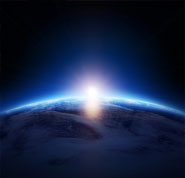 Just
once wouldn't you love for someone to simply show you the evidence for
God's existence? No arm-twisting. No statements of, "You just have to
believe." Well, here is an attempt to candidly offer some of the reasons
which suggest that God exists.
Just
once wouldn't you love for someone to simply show you the evidence for
God's existence? No arm-twisting. No statements of, "You just have to
believe." Well, here is an attempt to candidly offer some of the reasons
which suggest that God exists.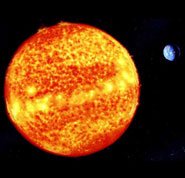 The
Earth is located the right distance from the sun. Consider the
temperature swings we encounter, roughly -30 degrees to +120 degrees. If
the Earth were any further away from the sun, we would all freeze. Any
closer and we would burn up. Even a fractional variance in the Earth's
position to the sun would make life on Earth impossible. The Earth
remains this perfect distance from the sun while it rotates around the
sun at a speed of nearly 67,000 mph. It is also rotating on its axis,
allowing the entire surface of the Earth to be properly warmed and
cooled every day.
The
Earth is located the right distance from the sun. Consider the
temperature swings we encounter, roughly -30 degrees to +120 degrees. If
the Earth were any further away from the sun, we would all freeze. Any
closer and we would burn up. Even a fractional variance in the Earth's
position to the sun would make life on Earth impossible. The Earth
remains this perfect distance from the sun while it rotates around the
sun at a speed of nearly 67,000 mph. It is also rotating on its axis,
allowing the entire surface of the Earth to be properly warmed and
cooled every day. Water
is a universal solvent. This property of water means that various
chemicals, minerals and nutrients can be carried throughout our bodies
and into the smallest blood vessels.5
Water
is a universal solvent. This property of water means that various
chemicals, minerals and nutrients can be carried throughout our bodies
and into the smallest blood vessels.5 Ninety-seven
percent of the Earth's water is in the oceans. But on our Earth, there
is a system designed which removes salt from the water and then
distributes that water throughout the globe. Evaporation takes the ocean
waters, leaving the salt, and forms clouds which are easily moved by
the wind to disperse water over the land, for vegetation, animals and
people. It is a system of purification and supply that sustains life on
this planet, a system of recycled and reused water.6
Ninety-seven
percent of the Earth's water is in the oceans. But on our Earth, there
is a system designed which removes salt from the water and then
distributes that water throughout the globe. Evaporation takes the ocean
waters, leaving the salt, and forms clouds which are easily moved by
the wind to disperse water over the land, for vegetation, animals and
people. It is a system of purification and supply that sustains life on
this planet, a system of recycled and reused water.6 The human brain processes more than a million messages a second.7
Your brain weighs the importance of all this data, filtering out the
relatively unimportant. This screening function is what allows you to
focus and operate effectively in your world. The brain functions
differently than other organs. There is an intelligence to it, the
ability to reason, to produce feelings, to dream and plan, to take
action, and relate to other people.
The human brain processes more than a million messages a second.7
Your brain weighs the importance of all this data, filtering out the
relatively unimportant. This screening function is what allows you to
focus and operate effectively in your world. The brain functions
differently than other organs. There is an intelligence to it, the
ability to reason, to produce feelings, to dream and plan, to take
action, and relate to other people.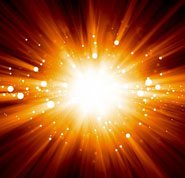 Scientists
are convinced that our universe began with one enormous explosion of
energy and light, which we now call the Big Bang. This was the singular
start to everything that exists: the beginning of the universe, the
start of space, and even the initial start of time itself.
Scientists
are convinced that our universe began with one enormous explosion of
energy and light, which we now call the Big Bang. This was the singular
start to everything that exists: the beginning of the universe, the
start of space, and even the initial start of time itself.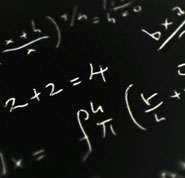 How is it that we can identify laws of nature that never change? Why is the universe so orderly, so reliable?
How is it that we can identify laws of nature that never change? Why is the universe so orderly, so reliable? All
instruction, all teaching, all training comes with intent. Someone who
writes an instruction manual does so with purpose. Did you know that in
every cell of our bodies there exists a very detailed instruction code,
much like a miniature computer program? As you may know, a computer
program is made up of ones and zeros, like this: 110010101011000. The
way they are arranged tell the computer program what to do. The DNA code
in each of our cells is very similar. It's made up of four chemicals
that scientists abbreviate as A, T, G, and C. These are arranged in the
human cell like this: CGTGTGACTCGCTCCTGAT and so on. There are three
billion of these letters in every human cell!!
All
instruction, all teaching, all training comes with intent. Someone who
writes an instruction manual does so with purpose. Did you know that in
every cell of our bodies there exists a very detailed instruction code,
much like a miniature computer program? As you may know, a computer
program is made up of ones and zeros, like this: 110010101011000. The
way they are arranged tell the computer program what to do. The DNA code
in each of our cells is very similar. It's made up of four chemicals
that scientists abbreviate as A, T, G, and C. These are arranged in the
human cell like this: CGTGTGACTCGCTCCTGAT and so on. There are three
billion of these letters in every human cell!! Why
is this so amazing? One has to ask....how did this information program
wind up in each human cell? These are not just chemicals. These are
chemicals that instruct, that code in a very detailed way exactly how
the person's body should develop.
Why
is this so amazing? One has to ask....how did this information program
wind up in each human cell? These are not just chemicals. These are
chemicals that instruct, that code in a very detailed way exactly how
the person's body should develop.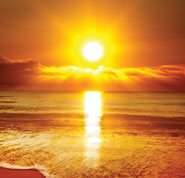 I
didn't realize that the reason the topic of God weighed so heavily on
my mind, was because God was pressing the issue. I have come to find out
that God wants to be known. He created us with the intention that we
would know him. He has surrounded us with evidence of himself and he
keeps the question of his existence squarely before us. It was as if I
couldn't escape thinking about the possibility of God. In fact, the day I
chose to acknowledge God's existence, my prayer began with, "Ok, you
win..." It might be that the underlying reason atheists are bothered by
people believing in God is because God is actively pursuing them.
I
didn't realize that the reason the topic of God weighed so heavily on
my mind, was because God was pressing the issue. I have come to find out
that God wants to be known. He created us with the intention that we
would know him. He has surrounded us with evidence of himself and he
keeps the question of his existence squarely before us. It was as if I
couldn't escape thinking about the possibility of God. In fact, the day I
chose to acknowledge God's existence, my prayer began with, "Ok, you
win..." It might be that the underlying reason atheists are bothered by
people believing in God is because God is actively pursuing them.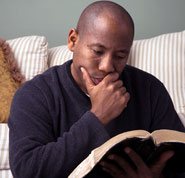 He said, "I am the light of the world, he who follows me will not walk in darkness, but will have the light of life."14
He claimed attributes belonging only to God: to be able to forgive
people of their sin, free them from habits of sin, give people a more
abundant life and give them eternal life in heaven. Unlike other
teachers who focused people on their words, Jesus pointed people to
himself. He did not say, "follow my words and you will find truth." He
said, "I am the way, the truth, and the life, no one comes to the Father
but through me."15
He said, "I am the light of the world, he who follows me will not walk in darkness, but will have the light of life."14
He claimed attributes belonging only to God: to be able to forgive
people of their sin, free them from habits of sin, give people a more
abundant life and give them eternal life in heaven. Unlike other
teachers who focused people on their words, Jesus pointed people to
himself. He did not say, "follow my words and you will find truth." He
said, "I am the way, the truth, and the life, no one comes to the Father
but through me."15 Does
God exist? If you want to know, investigate Jesus Christ. We're told
that "God so loved the world that he gave his only Son, that whoever
believes in him should not perish but have eternal life."18
Does
God exist? If you want to know, investigate Jesus Christ. We're told
that "God so loved the world that he gave his only Son, that whoever
believes in him should not perish but have eternal life."18